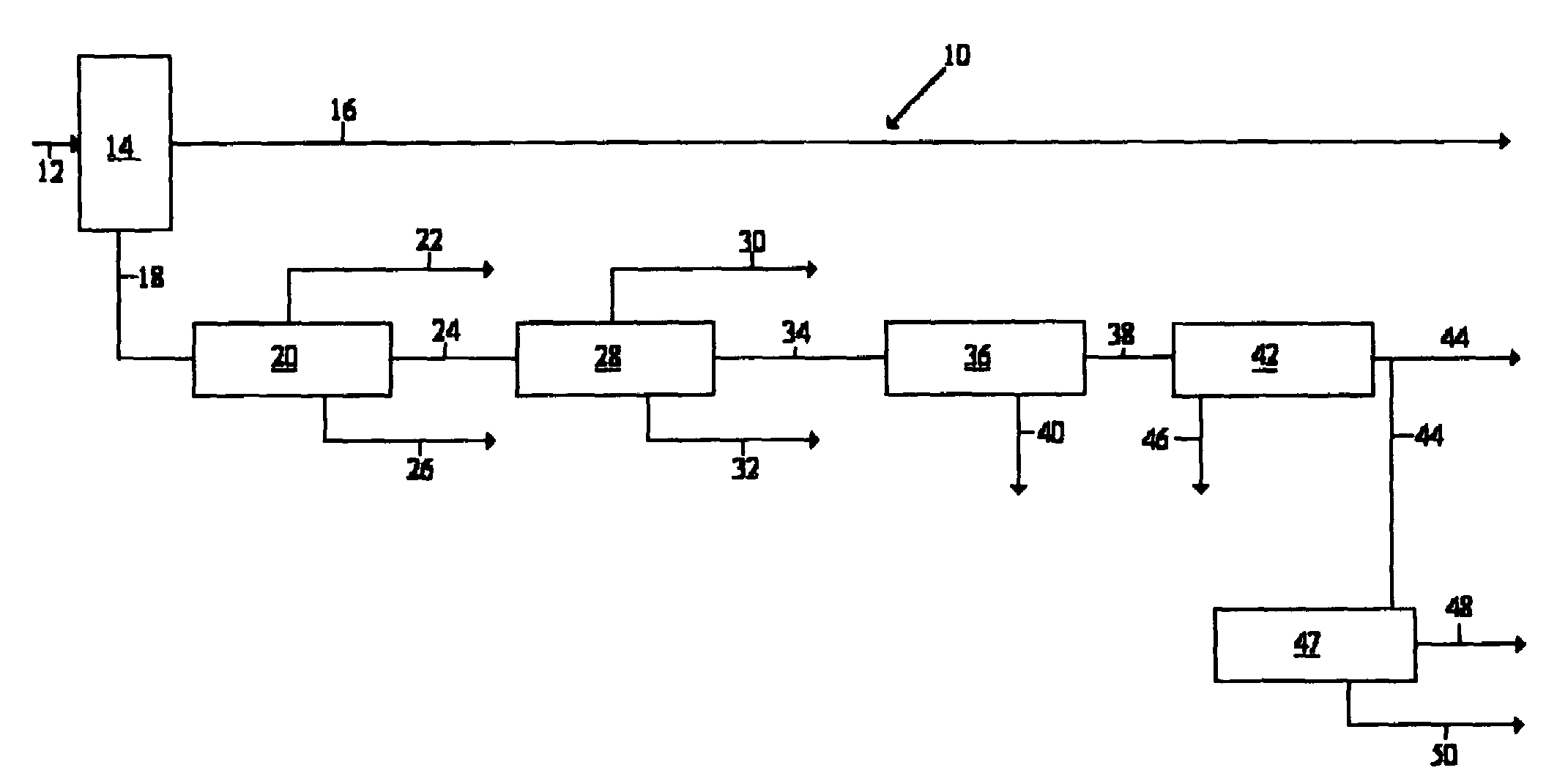Method of purifying fischer-tropsch derived water
a technology of fischer-tropsch and purification method, applied in biological water/sewage treatment, water contaminants, cation exchangers, etc., can solve the problems of inability to direct apply or dispose of these waters, short supply of water, and relatively expensive commodity, etc., to reduce the cost of the purification process. , the effect of reducing the cos
- Summary
- Abstract
- Description
- Claims
- Application Information
AI Technical Summary
Benefits of technology
Problems solved by technology
Method used
Image
Examples
Embodiment Construction
[0105]The Fischer-Tropsch reaction water 12 is fed to a distillation column 14 for primary treatment.
[0106]Two streams 16 and 18 exit distillation column 14. Stream 16 contains predominantly organic constituents whilst stream 18 is a primary water enriched stream.
[0107]At least a fraction of the organic acids in stream 18 are thereafter removed by liquid-liquid separation 20.
[0108]Liquid-liquid separation 20 yields an organic acid enriched extract stream 22, a secondary water enriched or raffinate stream 24 and a mixed hydrocarbon stream.
[0109]The secondary water enriched stream is subjected to biological treatment 28 which yields gases 30, sludge 32 and a tertiary water enriched stream 34. Biological treatment can take the form of anaerobic treatment or aerobic treatment or a combination of the two.
[0110]The tertiary water enriched stream 34 from biological treatment 28 is typically subjected to a softening step 36 which yields a softened tertiary water enriched stream 38 and sludg...
PUM
| Property | Measurement | Unit |
|---|---|---|
| mass % | aaaaa | aaaaa |
| temperature | aaaaa | aaaaa |
| pressure | aaaaa | aaaaa |
Abstract
Description
Claims
Application Information
 Login to View More
Login to View More - R&D
- Intellectual Property
- Life Sciences
- Materials
- Tech Scout
- Unparalleled Data Quality
- Higher Quality Content
- 60% Fewer Hallucinations
Browse by: Latest US Patents, China's latest patents, Technical Efficacy Thesaurus, Application Domain, Technology Topic, Popular Technical Reports.
© 2025 PatSnap. All rights reserved.Legal|Privacy policy|Modern Slavery Act Transparency Statement|Sitemap|About US| Contact US: help@patsnap.com


